Dancers Heel
Read More >
Patients often describe stiffness and heel pain in the morning, and Plantar Fasciitis is the most common cause. However, if you are experiencing heel pain in the morning, it’s not only Plantar Fasciitis that can cause it. We have created a list of conditions that cause heel pain in the morning below:
So, let’s look at these conditions that cause heel pain in the morning in greater detail.
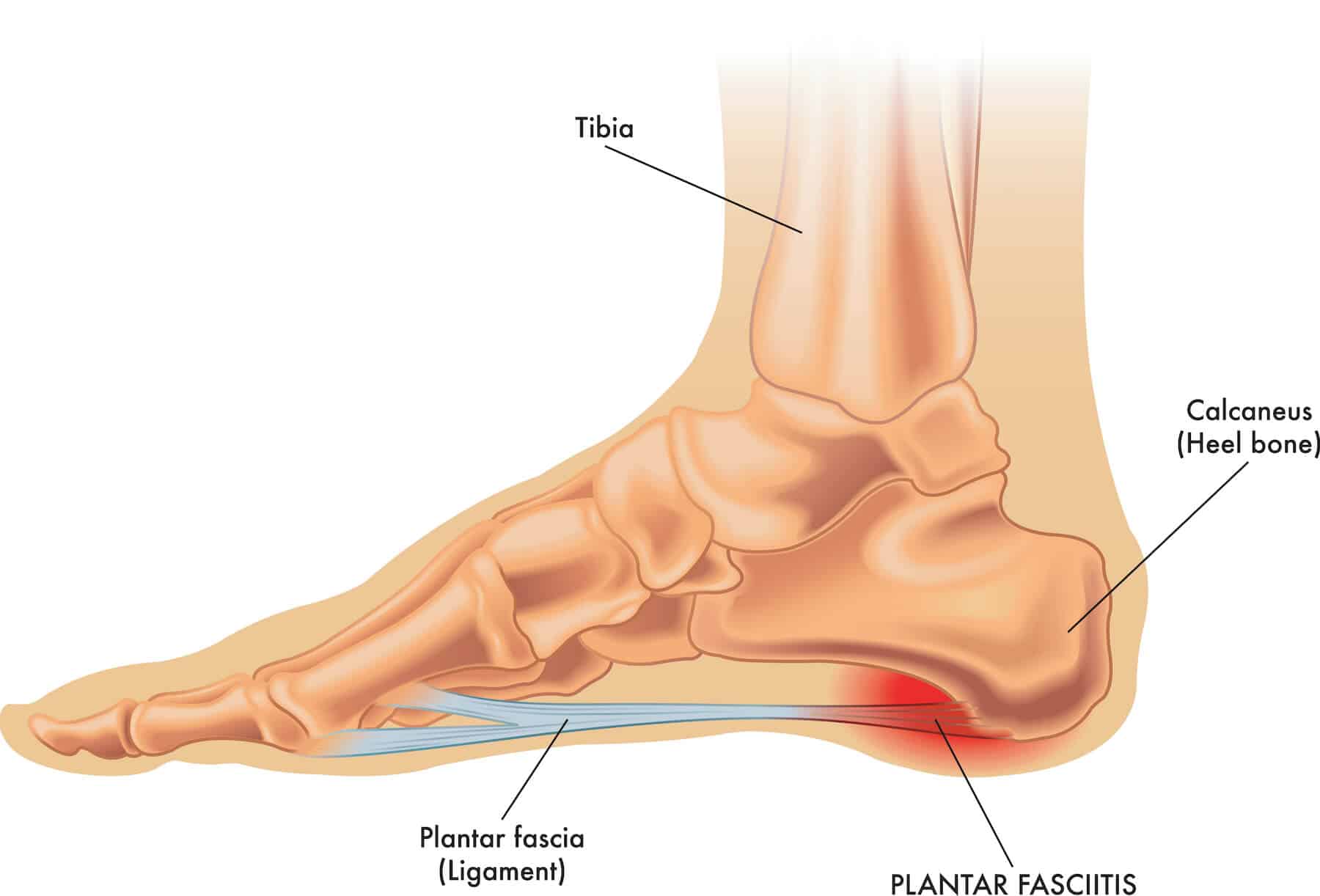
The Plantar Fascia is a thick piece of connective tissue that connects the heel bone to the ball of the foot. The Plantar Fascia cannot contract like a muscle, and its primary functions are to provide structure and stability to the underside of the foot. Standing or walking excessively can place strain and a stretch on the Plantar Fascia, leading to Plantar Fasciitis.
Classic symptoms of Plantar Fasciitis are heel pain first thing in the morning, mainly on the inner heel that eases within 10-30 minutes, pain at the start of activity but improves as the tissue warms up.
We explain the causes and treatment in our Plantar Fasciitis Article.
The Achilles Tendon is located on the back of the lower leg, attaching the calf muscle to the heel bone. Where the Achilles Tendon attaches to the heel bone, it is known as the Achilles Tendon Insertion. If the insertion of the Achilles Tendon becomes overloaded and inflamed, it develops into Insertional Achilles Tendonitis.
Symptoms of Insertional Achilles Tendonitis include pain on the back of the heel in the morning when getting out of bed for improvement after a few steps. Pain can be worse going uphill or at the start of a run.
We have extensive articles on the symptoms and treatment for Insertional Achilles Tendonitis.
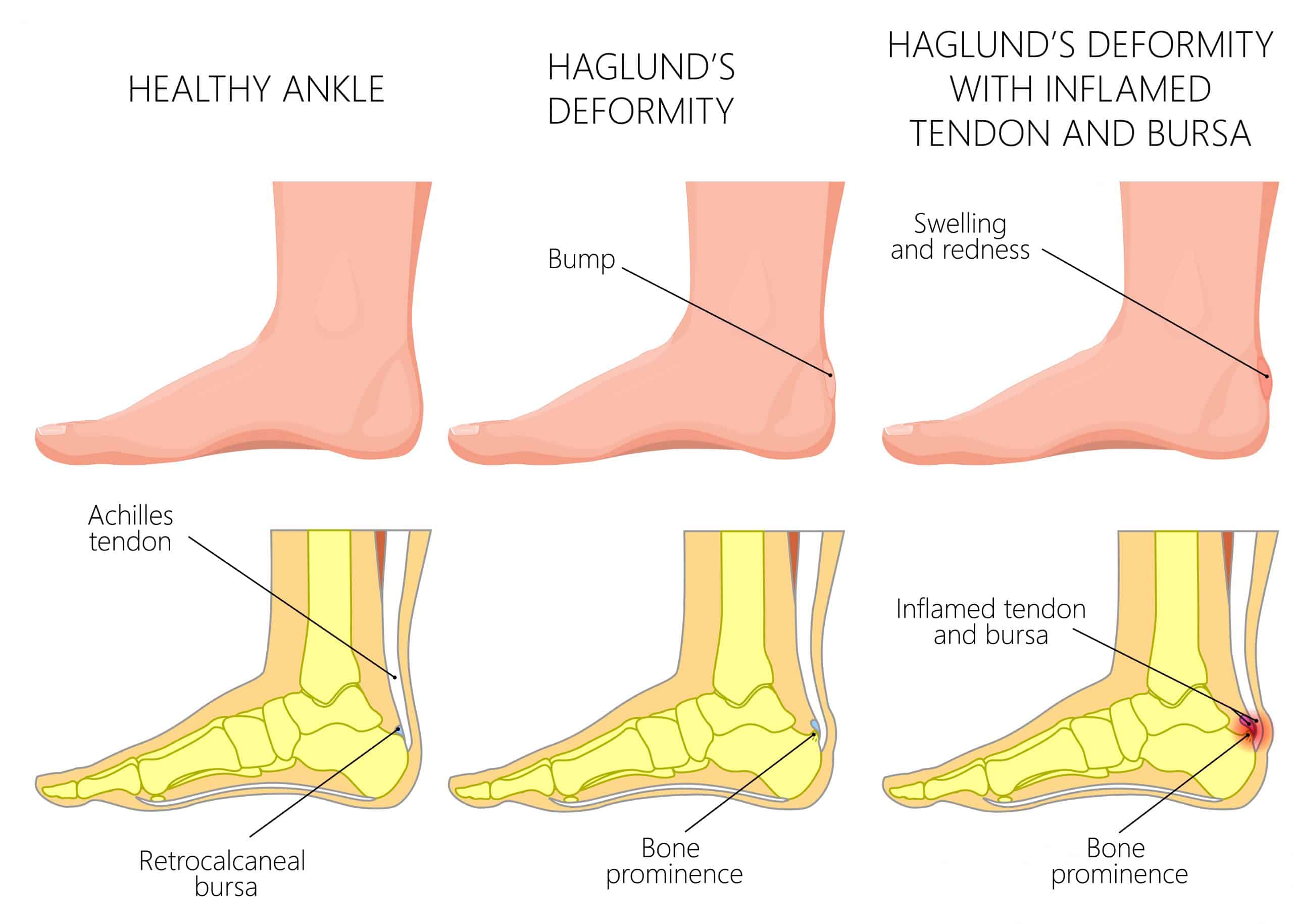

The Plantaris Tendon is a long thin tendon that runs parallel to the Achilles Tendon and inserts into the inner aspect of the back of the heel bone. If the tendon becomes overloaded, it leads to Plantaris Tendonitis, and the primary function of the Plantaris Tendon is to provide proprioception to the foot and ankle.
Symptoms of Plantaris Tendonitis include pain on the medial aspect of the Achilles Tendon as it attaches to the heel bone and causes pain in the morning on the back of the heel.
We have provided a detailed analysis in our Plantaris Tendonitis article.
Baxter’s nerve is a nerve branch that innervates the underside of the heel bone and causes 20% of all heel pain. It is often misdiagnosed as Plantar Fasciitis due to the location of its symptoms; however, it can cause numbness on the underside of the foot, unlike Plantar Fasciitis.
Other symptoms of Baxter’s Nerve Entrapment include pain on the underside of the heel in the morning and getting worse with exercises. In contrast, Plantar Fasciitis pain usually improves with exercise.
If you want to learn more about Baxter’s Nerve Entrapment, we cover it in detail here.
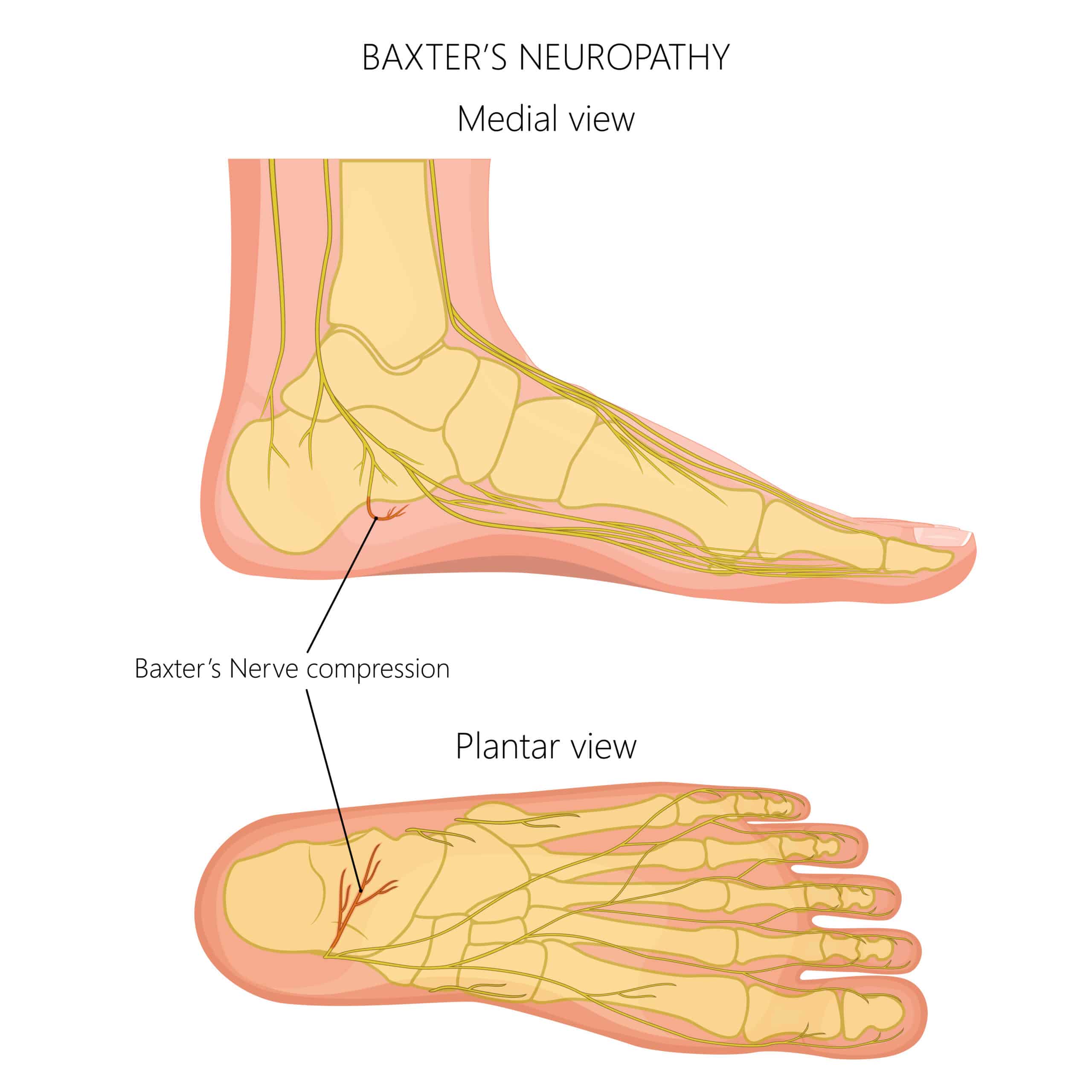
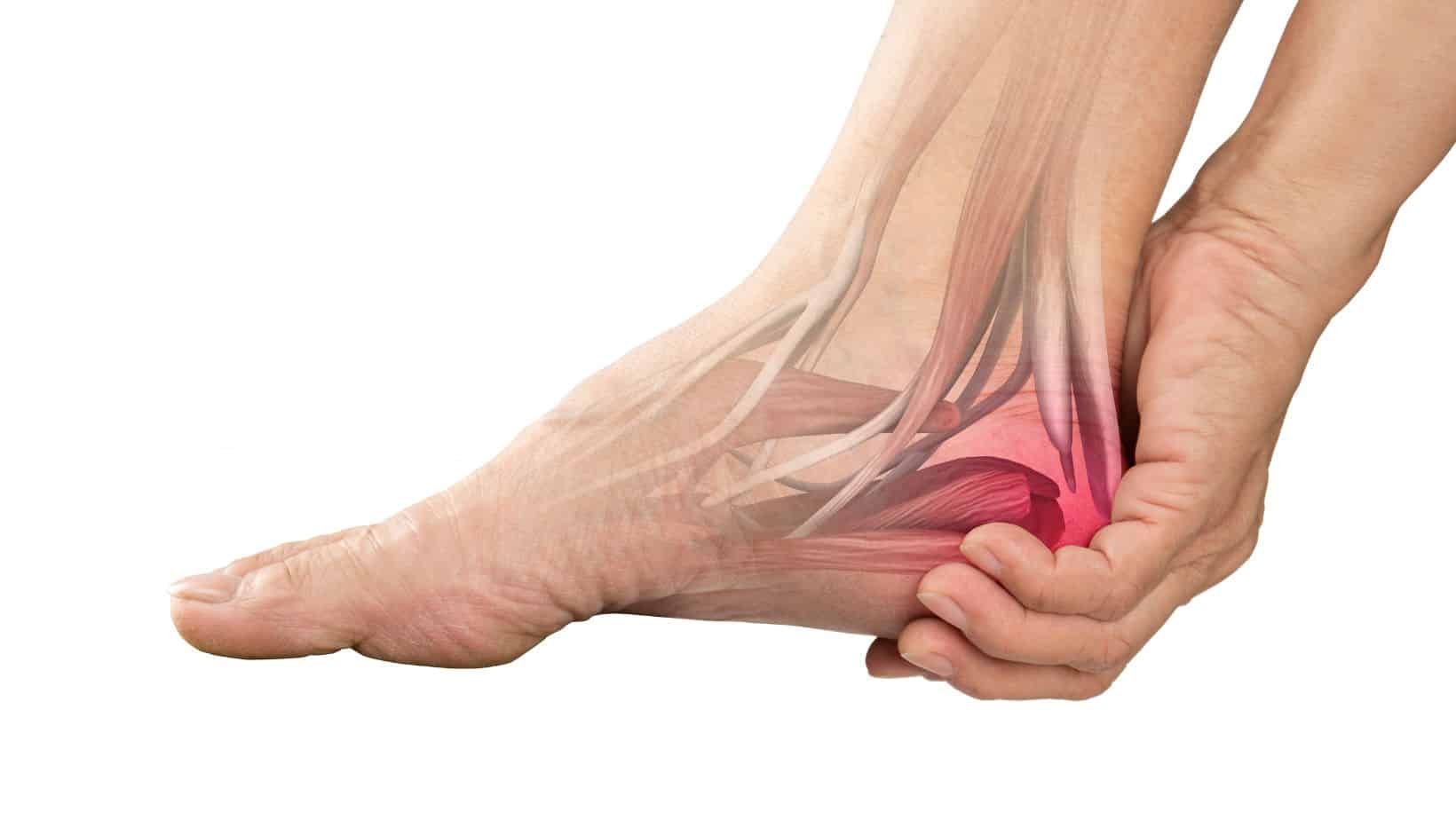
On the underside of the heel bone is a fat pad that acts as a cushion when your walk, stand or run. Nerves highly innervate the Heel Fat Pad, but if it is aggravated by repetitive impact or trauma such as a fall, it can lead to a bruised heel.
Symptoms of a bruised heel include tenderness to touch in the middle of the underside of the heel and pain in the centre of the heel in the morning. Symptoms should ease when non-weight bearing and are worse with impact activity.
To learn more about the best treatment for a Bruised Heel, we have an article that explains it in detail.
The Calcaneus, or the heel bone, sits on the underside of your ankle joint and plays a role in foot and ankle stability. The Calcaneus bone is designed to tolerate high levels of impact and force, and as a result, a fracture to the calcaneus is rare but can occur in a car crash, fall from a height, or repetitive strain can cause Calcaneus Stress Fracture.
Symptoms of a Calcaneus Fracture include an immediate onset of heel pain when weight bearing improves with rest. Pain is present in the heel first thing in the morning, which is often sharp, and patients may not be able to bear weight.
In our articles, we cover the symptoms of different types of Fractures to the calcaneus and how to treat Calcaneus fractures in greater detail.
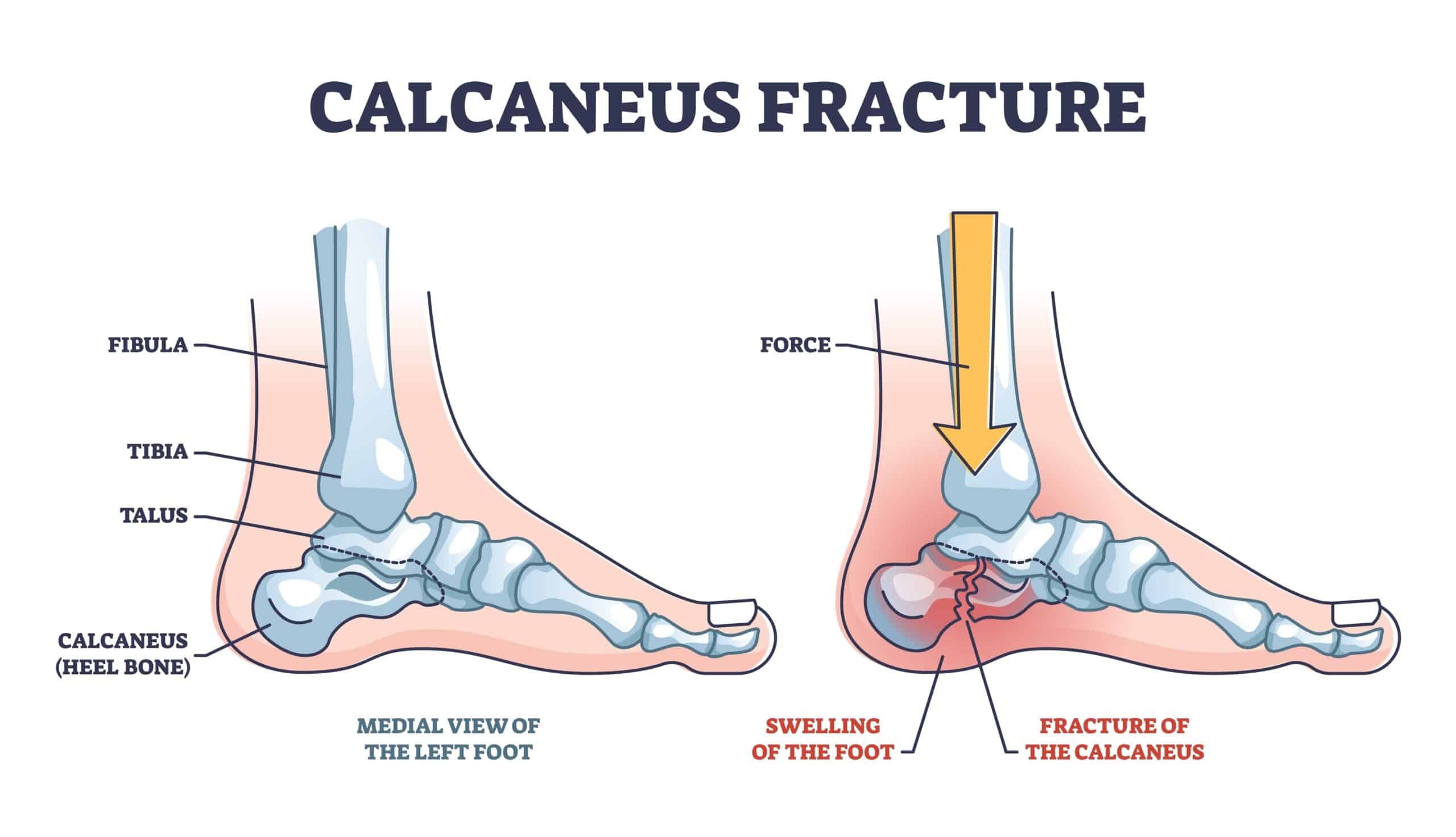
This is not medical advice and you should consult your healthcare practitioners before removing a boot. and we recommend a consultation with a medical professional such as James McCormack before trying any of these exercises. James offers Online Physiotherapy Appointments for £45.
Related Article: Heel Pain After Running